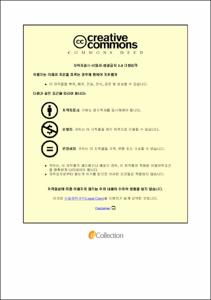IDH 변이가 없는 (IDH-wildtype) 교모세포종의 영상 기반 시공간 종양 서식지에 대한 전향적 장기 분석: 다중인자 생리학적 자기공명 영상을 통한 환자 예후 예측
- Alternative Title
- Prospective Longitudinal Analysis of Imaging-based Spatiotemporal Tumor Habitats in Glioblastoma, IDH-wildtype : Implication in Patient Outcome Using Multiparametric Physiologic MRI
- Abstract
- Purpose: Physiologic MRI-based tumor habitat analysis has the potential to predict patient outcomes by identifying the spatiotemporal habitats of glioblastoma. This study aims to prospectively validate physiologic MRI-based tumor habitats for predicting time-to- progression (TTP) and the site of progression in isocitrate dehydrogenase (IDH)-wildtype glioblastoma patients following concurrent chemoradiotherapy (CCRT). Materials and Methods: We prospectively enrolled 79 patients (mean age, 59.4 years ± 11.6 [SD]; 40 women; ClinicalTrials.gov ID: NCT02613988) with glioblastoma, IDH-wild who underwent CCRT. Immediate post-op and three serial MRI scans were obtained at three-month intervals, including diffusion-weighted imaging and dynamic susceptibility contrast imaging. Voxels from cerebral blood volume and apparent diffusion coefficient maps were grouped into 3 spatial habitats (hypervascular cellular, hypovascular cellular, and nonviable tissue) using k- means clustering. The pre-defined cutoff for the habitat risk score was applied (PMID: 33028594) with an increase in hypervascular cellular habitat (>0 voxel) or hypovascular cellular habitat (>130 voxels). Associations between spatiotemporal habitats, habitat risk score, and TTP were investigated using Cox proportional hazard modeling and Kaplan-Meier method. The site of progression was matched with the spatiotemporal habitats. Results: An increase in hypervascular cellular habitat was associated with shorter TTP between post-op and post-CCRT #1 (Hazard ratio [HR], 72.41, P =.018). An increase in hypovascular cellular habitat was associated with shorter TTP between post-op and post- CCRT #1 (HR, 2.25, P =.010), post-CCRT #1-2 (HR, 51.60, P <.001), and post-CCRT #2-3 (HR, 3.52, P=.012). The habitat risk score between post-op and post-CCRT #1, post-CCRT #1-2, and post-CCRT #2-3 successfully stratified patients into low-, intermediate-, and high- risk groups (log-rank test; P =.002, < .001, and .002, respectively). High habitat risk scores between post-op and post-CCRT#1 and post-CCRT #1-2 were independent predictors of TTP (P = .004 and P = .003, respectively) in multivariable Cox analysis. An increase in the hypovascular cellular habitat predicted tumor progression sites (mean DICE index: 0.31). Conclusion: Spatiotemporal tumor habitats and habitat risk score derived from multiparametric physiologic MRI were validated as useful biomarkers for clinical outcomes in patients with IDH wild-type glioblastoma following CCRT. The hypovascular cellular habitat may serve as a robust imaging biomarker for predicting early tumor progression and identifying the site of progression.|서론: 생리학적 자기 공명 영상(MRI)을 기반으로 한 종양 서식지 분석은 교모세포종의 시공간 서식지를 식별함으로써 환자 결과를 예측할 수 있는 잠재력이 있다. 본 연구는 IDH 변이가 없는 IDH-wildtype) 교모세포종 환자들에서 동시 화학 방사선 치료(concurrent chemoradiotherapy, CCRT) 후 진행 시간 (time to progression, TTP) 및 진행 위치를 예측하기 위해 생리학적 MRI 기반 종양 서식지를 전향적으로 검증하는 것을 목적으로 하였다.
방법: 본 연구에서는 CCRT 를 받은 79 명의 IDH-wildtype 교모세포종 환자들을 전향적 으로 등록하였다 (평균 연령 59.4 세 ± 11.6 [표준편차]; 여성 40 명; ClinicalTrials.gov ID: NCT02613988). 수술 직후 및 3 개월 간격으로 3 회의 일련의 MRI 검사 수행되었으며, 확산 가중 영상 (diffusion-weighted imaging) 및 동적 감수성 대조 영상 (dynamic susceptibility contrast imaging)이 포함되었다. 뇌 혈류량 (cerebral blood volume) 및 표면 확산 계수 지도 (apparent diffusion coefficient maps)에서의 voxel 은 k-means clustering 을 사용하여 3 개의 공간 서식지 (과잉 혈관 세포, 저혈관 세포, 비활성 조직)로 그룹화 되었다. 서식지 위험 점수 (habitat risk score)에 대해서는 미리 정의된 기준 (PMID:33028594)으로, 과잉 혈관 세포 서식지 (>0 voxel) 또는 저혈관 세포 서식지 (>130 voxel) 증가가 적용되었다. 시공간 서식지, 서식지 위험 점수 및 TTP 간의 관련성은 Cox 비례 위험 모델 및 Kaplan-Meier 방법을 사용하여 분석되었다. 진행 위치는 시공간 서식지와 비교되었다.
결과: 수술 후와 CCRT 첫번째 검사 사이에서의 과잉 혈관 세포 서식지 증가는 의 짧은 TTP 와 연관이 있었다 (위험 비율 [Hazard ratio, HR], 72.41, P =.018). 수술 후와 CCRT 첫번째 검사, CCRT 첫 번째와 두 번째 검사, 그리고 CCRT 두 번째와 세 번째 검사 사이에서의 저혈관 세포 서식지의 증가는 의 짧은 TTP 와 연관이 있었다 (HR, 2.25, P =.010;HR, 51.60, P <.001; HR, 3.52, P=.012) . 수술 후와 CCRT 첫 번째 검사, CCRT 첫 번째와 두 번째 검사, CCRT 두 번째와 세 번째 검사 간의 서식지 위험 점수는 환자를 저위험, 중위험 및 고위험 그룹으로 성공적으로 계층화 하였다 (log-rank test; P =.002, < .001, .002). 수술 후와 CCRT 첫 번째 검사, CCRT 첫 번째와 두 번째 검사 간의 높은 서식지 위험 점수는 다변량 Cox 분석에서 TTP 의 독립적인 예측 변수였다 (P=.004 및 P=.003). 저혈관세포 서식지의 증가는 종양 진행 위치를 예측했다 (평균 DICE 지수: 0.31).
결론: 본 연구를 통해 다중 매개 변수 생리학적 MRI 로 유도된 시공간 종양 서식지 및서식지 위험 점수는 CCRT 후 IDH-wildtype 교모세포종 환자의 임상 결과에 대한 유용한 영상 표지자로 검증되었다. 저혈관 세포 서식지의 증가는 초기 종양 진행과 진행 장소를 예측하는 강력한 영상 표지자로 기능할 수 있을 것으로 기대된다.
- Issued Date
- 2024
- Awarded Date
- 2024-02
- Type
- Dissertation
- Keyword
- Glioblastoma
- Alternative Author(s)
- Hye Hyeon Moon
- Affiliation
- 울산대학교
- Department
- 일반대학원 의학과
- Advisor
- 박지은
- Degree
- Doctor
- Publisher
- 울산대학교 일반대학원 의학과
- Language
- eng
- Rights
- 울산대학교 논문은 저작권에 의해 보호받습니다.
- Appears in Collections:
- Medicine > 2. Theses (Ph.D)
- 파일 목록
-
-
Download
 200000729354.pdf
기타 데이터 / 2.12 MB / Adobe PDF
200000729354.pdf
기타 데이터 / 2.12 MB / Adobe PDF
-
Items in Repository are protected by copyright, with all rights reserved, unless otherwise indicated.